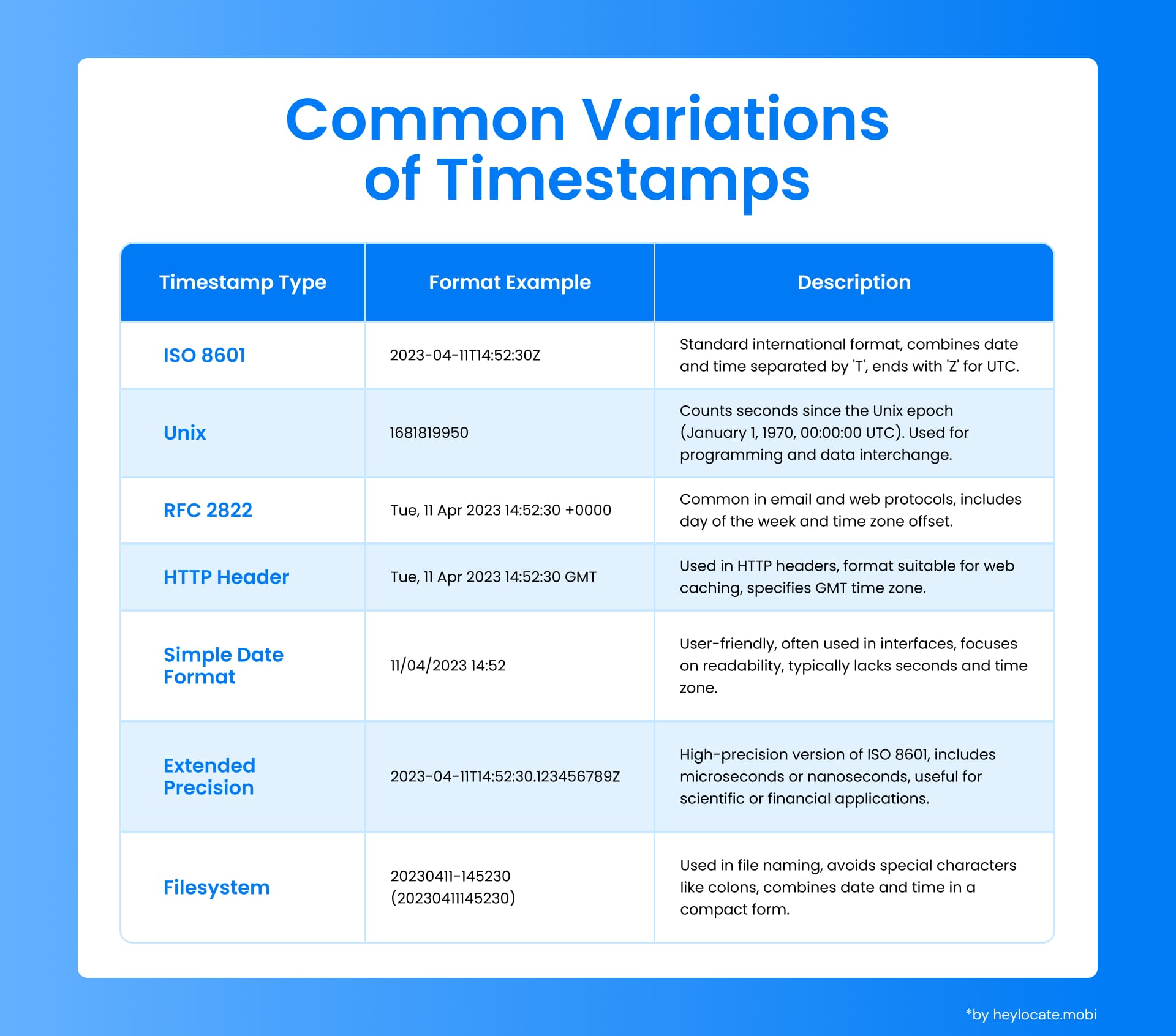Timestamp
What is Timestamp?
A timestamp is a digital marker that records the exact date and time of a specific event or action. It functions like a chronological label to understand the sequence of events within a particular context. Timestamps are crucial in various fields, including computer science, data analysis, and record-keeping.
Different Variations of Timestamps
While the term “timestamp” is commonly used, it is important to clarify the different variations of timestamps:
| Datestamp | Date only (e.g., 2022-09-28) |
| Timestamp | Date and time (e.g., 2022-09-28 14:30:00) |
| Date-timestamp | Date, time, and additional information (e.g., 2022-09-28 14:30:00 UTC+2) |
Digital Timestamping Practices
Timestamps are crucial in the digital world for ensuring consistency and facilitating various operations. They play an important role in data comparison, tracking changes, and determining the sequence of events. This enables accurate data analysis and interpretation, especially when dealing with large datasets or complex systems.

Application in File Systems and Software
Timestamps are widely used in file systems and software applications to manage and track data and system operations. Operating systems and file systems utilize different types of timestamps to record specific events and changes. Three common types include:
| Type | Description |
|---|---|
| Access Time (atime) | Records the last time a file was accessed |
| Modification Time (mtime) | Represents the last modification time |
| Change Time (ctime) | Denotes the time when the file’s metadata changed (permissions or ownership) |
Challenges with Timestamp Accuracy
Inaccurate or unreliable timestamps, often referred to as dirty timestamps, can result from various sources, such as system clock synchronization issues, human errors, or deliberate manipulation.
Temporal constraints can be utilized effectively to address the challenges of timestamp accuracy. These constraints are rules or conditions applied to timestamps to ensure their dependability and precision. By incorporating these constraints, the integrity of timestamp data can be preserved and utilized with confidence.
Timestamp Standardization
To ensure interoperability and consistency in representing timestamps, various standards have been established. The ISO 8601 standard, published by the International Organization for Standardization, provides a widely accepted format for representing dates and times. Other timestamp formats exist, such as RFC 3339 and Unix time.
References
- Timestamp – Wikipedia
- ISO 8601 – Wikipedia
- RFC 3339 – Date and Time on the Internet: Timestamps
- Unix time – Wikipedia
- What is a timestamp?
- What is Timestamp & How Does It Work? | Lenovo US
- Timestamps, Time Zones, Time Ranges, and Date Formats | Sumo Logic Docs